The scrapping of Boris Johnson’s Garden Bridge project has exposed a £940m bill for his “vanity projects” as London mayor and prompted a senior Labour figure to say her party was partly to blame.
The figure is the total spent on eight projects closely associated with the former mayor, including the pedestrian bridge for the Thames that was abandoned this week, which either failed or whose value for money has been questioned.
His office insisted that the schemes represented important investments and that to describe them as vanity projects was “ignorant and wrong”.
Three Johnson projects ended in failure at a cost of more than £57.5m: the Garden Bridge; the purchase of water cannon; and the Thames estuary airport.
Five others: the new Routemaster bus; hire bikes; the Emirates Air Line cable car; the conversion of the Olympic stadium and the ArcelorMittal Orbit helter-skelter, all did go ahead at a combined cost of more than £900m. They have run into problems after turning out to be far more expensive than promised.
The former Labour minister Margaret Hodge, whose review of the Garden Bridge project led to its abandonment, said she was shocked at how “irresponsible” Johnson was with public money. But during her review she was also struck by the lack of scrutiny of his profligate spending decisions when mayor.
“I kept thinking how the hell was he allowed to get away with this,” Hodge told the Guardian.
Hodge, a former chair of the Commons public accounts committee, said the Labour government she served in should have put in place more checks on mayoral powers when it set up the post in the late 1990s.
“When Tony Blair and [local government minster] Nick Raysnford set it up they didn’t want it to have the bureaucratic constraints of a local authority. So in a sense we gave him [Johnson] the opportunity.”Johnson’s office contrasted his legacy with the lack of achievement to date of Sadiq Khan. “He has no vision for the city whatsoever … Ken Livingstone [when mayor] blew £34m on a West London tram and £24m on a cross-river tram. Both of them turned out to be wholly impractical but at least he had ambition and guts.”
Labour assembly member Tom Copley said that now Johnson was foreign secretary there was even less scope to scrutinise past decisions. “I don’t think we’ll know the full cost of Boris until a few years down the line,” Copley said.
Johnson projects: the list in full
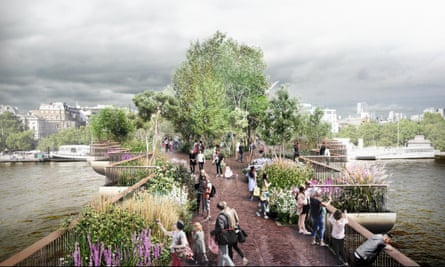
Garden Bridge £52m
Johnson said the Thomas Heatherwick-designed bridge was a beautiful project and accused his mayoral successor, Sadiq Khan, of cancelling it “out of pettiness and spite”. But few others, beside the actor Joanna Lumley who conceived the idea, have mourned its demise. Instead attention has turned to how £52m of public money was to be squandered on a project that was never started. About £37m has already been spentand the government will have to fork out another £15m for underwriting the project, according to campaigners.
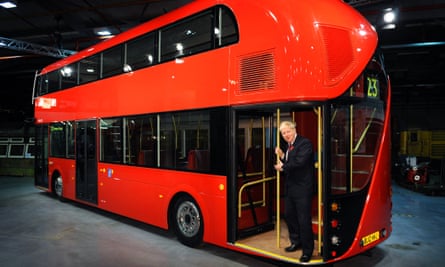
New Routemaster £321.6m
This was another costly Heatherwick-Johnson co-production. Transport for London paid £282.6m for a fleet of 800 of the hop-on, hop-off buses that were billed by Johnson as an environmentally friendly version of the old Routemaster. This was considerably more per bus than the mayor originally suggested. The vehicles were first dubbed “Boris buses” but then “saunas on wheels” after temperatures of 38C were recorded on board. New windows had to be put in at an extra cost of £2m. According to Martin Hoscik, editor of MayorWatch, the new Routemasters “have no market outside London”. Johnson’s office says: “The new Routemasters came out of existing TfL bus budgets and are already classics of UK manufacture and design. They are made in Ballymena and are to be contrasted with Ken Livingstone’s cyclist-menacing bendy buses that were made in Germany.”
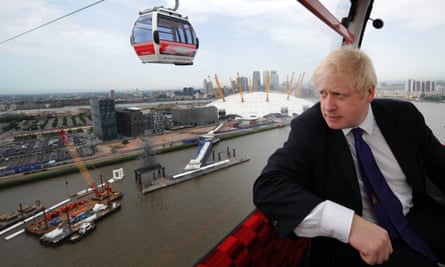
Emirates Air Line £24m
The cable car across the Thames from the Greenwich Peninsula to the Royal Docks turned out to be much more expensive than Johnson promised. Emirates airline did stump up £36m towards the cost of the project which, at £60m, is the world’s most expensive urban cable car. But it left TfL to mask up the £24m difference for what critics said amounts to little more than advertising gimmick for the airline. Sky-high ticket prices of £7 for a return, more than double the equivalent bus fare, means the project does now pay for itself. . Johnson’s office is unrepentant. “The cable car was mostly funded by sponsorship and has helped considerably to regenerate the docks,” it said.
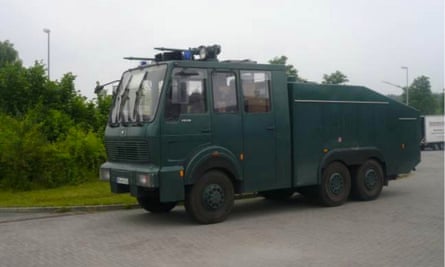
Water cannon £323,000
Johnson’s decision to buy three Wasserweffer 9000 water cannon in 2014 was made to address police concerns about dealing with any repeat of the 2011 riots . But it turned out to be a rash one, as he had not cleared it with the then home secretary, Theresa May. In the face of public opposition she outlawed the use of water cannon, leaving London with three expensive but useless items of police hardware. Last year the mayor, Sadiq Khan, revealed that Johnson had spent £323,000 to buy, maintain and modify the vehicles. The cannon have still not been sold.
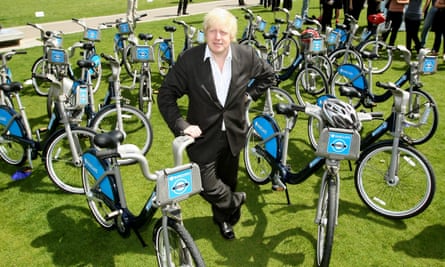
Hire bikes £225m
The term Boris bikes was one of the Oxford dictionary’s words of the year when the scheme was launched in 2010, despite initial sponsorship by Barclays and later Santander. Johnson’s office says: “The hire bikes are a triumph for the city. Their cost has been greatly reduced by sponsorship from Santander.”
However, they were meant to come in at no cost to the public but by last year had cost taxpayers a cumulative £225m.
There were also concerns about the lack of transparency around the initial sponsorship deal, which was kept secret for three years before it emerged that Barclays was able to claw back £2m it put in. A new sponsorship deal with Santander covers only part of the costs, leaving TFL with an £11m annual bill, according to a figures unearthed by the Taxpayers Alliance in 2013. An equivalent scheme in Paris makes £12m a year for the city.
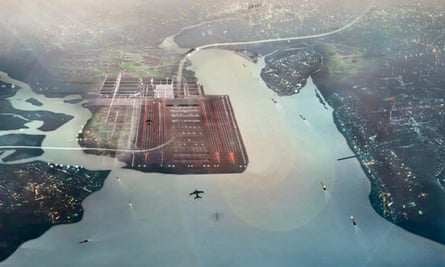
Estuary airport £5.2m
Transport for London set aside £5.2m on a feasibility schemes for an airport in the Thames estuary that few others thought feasible as ministers examined how to expand airport capacity in London. Johnson backed a glossy vision by the architects Foster + Partners for a four-runway airport island in a key conservation area for birds but it was never a realistic prospect in a battle won by Heathrow over Gatwick.
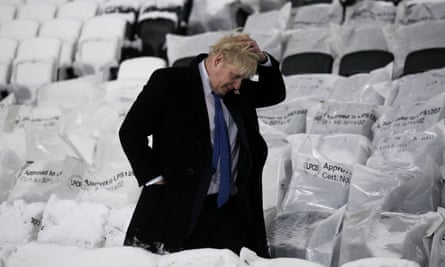
Olympic stadium conversion £305.5m
Johnson may have inherited the Olympic stadium but its subsequent conversion to a football stadium happened on his watch. After he was elected mayor for the first time in 2008, he ditched plans to reduce the capacity of the stadium to 25,000 seats. Instead he began to talk up the idea of getting a Premier League football club involved. The costs were originally estimated to be around £154m with a sizeable contribution coming from the club. But the costs soared as the contribution from the selected club, West Ham, dwindled. It agreed to pay just £15m plus £2.5m in rent. The bulk of the remaining £323m had to be paid by the taxpayer. Johnson’s office said: “It was entirely the decision of Labour to build a stadium that needed to be retrofitted. Is the Guardian seriously suggesting that we should have left it as it was?”
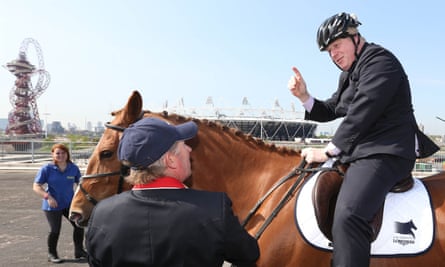
ArcelorMittal Orbit £6.1m
This was conceived after Johnson bumped into the steel magnate Lakshmi Mittal at a cloakroom at the World Economic Forum at Davos. The original Anish Kapoor tower was commissioned at a £3.1m cost to the tax payer and, in Johnson’s words, to provide “something extra ... curiosity and wonder” to the Olympic park. But visitors were not as wowed as he hoped. In 2014-15 fewer than expected visitors meant the tower lost £520,000. According to Kapoor, Johnson then “foisted on” the idea of adding a £3m helter-skelter slide by the Belgium artist Carsten Holler. The Guardian’s architecture critic Oliver Wainwright wrote: “Of all of Johnson’s follies it has been the most useless totem pole of mayoral hubris.” It has just been voted one of the most popular pieces of public art in Britain, Johnson’s office pointed out.
Total: £939.7m
